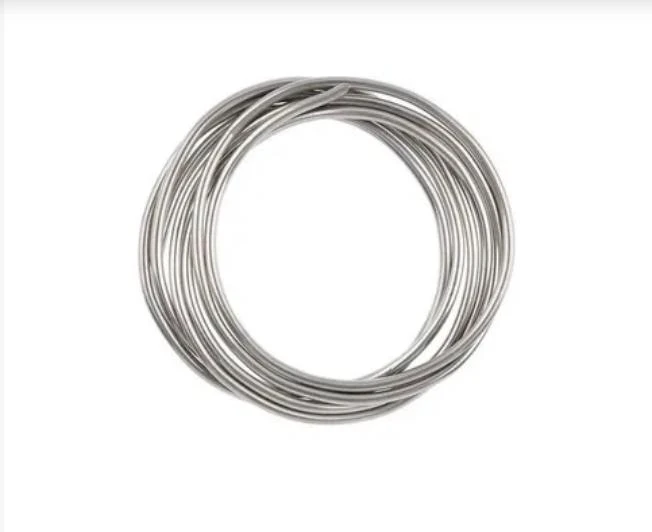-
 Phone:
Phone: -
 Email:
Email:

Cost Estimation for Rockfall Netting Solutions in Various Applications
Understanding the Factors Influencing Rockfall Netting Prices
Rockfall netting is an essential safety measure used in engineering and environmental applications to prevent rockfalls from causing damage to infrastructure, roadways, and natural landscapes. As the demand for safe and sustainable construction practices grows, more developers and authorities are considering the implementation of rockfall netting systems. However, one of the primary concerns is the cost associated with these systems. Understanding the factors that influence rockfall netting prices is crucial for decision-makers.
The Basics of Rockfall Netting
Before delving into pricing, it is essential to understand what rockfall netting is. It consists of a resilient mesh designed to capture falling rocks and debris, thereby minimizing risk to people and property. Rockfall netting can be made of various materials, including galvanized steel, high-strength synthetic fibers, or wire mesh, each contributing differently to performance, durability, and cost.
Material Quality and Type
One of the most significant factors influencing rockfall netting prices is the material used. High-quality materials tend to be more expensive but provide superior strength, durability, and resistance to weather elements. For example, galvanized steel netting offers excellent resistance to corrosion, making it suitable for harsh environments. In contrast, synthetic nets are lighter and easier to install but may not have the same lifespan as steel options. Thus, selecting the right material for the specific application and environmental conditions can significantly impact overall costs.
Project Size and Scope
The scale of the project plays a vital role in determining the overall cost of rockfall netting installation. Larger projects usually benefit from economies of scale, which can lower the cost per unit of netting. Conversely, smaller projects may face higher relative costs, as the fixed expenses of design, preparation, and installation remain constant regardless of the project size. Therefore, assessing the project’s scale before purchasing materials is crucial to estimating accurate costs.
Installation Complexity
rockfall netting price

The complexity of installing rockfall netting can also affect pricing. Factors such as the terrain's steepness, accessibility, and the type of equipment needed for installation can lead to fluctuations in overall project costs. For instance, if the installation site is difficult to access, it may require more specialized equipment or additional labor, increasing the overall cost of the project.
Design and Engineering Requirements
Engineers often need to conduct thorough site evaluations and develop specific plans tailored to the project’s needs. This design work is critical to ensure the netting will effectively withstand the forces exerted by falling rocks. Consequently, the complexity of the engineering and design work involved can add to the overall costs of the rockfall netting system. More intricate designs that take into account specific geological conditions or higher safety standards will naturally command higher prices.
Geographic Location
Geographic location can also significantly influence rockfall netting prices. Regions with a higher incidence of rockfalls may have more suppliers and contractors experienced in installing such systems, potentially leading to competitive pricing. On the other hand, remote areas may have limited availability of materials and equipment, leading to higher transportation costs and markup prices by local contractors.
Maintenance and Longevity Considerations
When estimating the cost of rockfall netting, it's vital to consider not just the initial purchase and installation costs but also potential maintenance expenses over time. Although higher-quality materials may present a more significant initial investment, they can lead to lower maintenance requirements and longer service life, resulting in cost savings in the long run. Additionally, some regions may require periodic inspections and maintenance work, which can further impact overall costs.
Conclusion
In summary, rockfall netting prices can vary widely based on multiple factors, including material quality, project size, installation complexity, engineering requirements, geographic location, and maintenance considerations. When planning a project involving rockfall mitigation, it is essential for developers and planners to take these variables into account to ensure not only safety but also cost-effectiveness. By doing so, they can make informed decisions that optimize both the safety of the area and the financial resources available for the project. Investing in quality rockfall netting systems is not just a matter of preventing accidents—it is an essential step in promoting long-term sustainability and safety in our built and natural environments.
-
Wire Mesh for Every Need: A Practical SolutionNewsJul.25,2025
-
Steel Fences: Durable, Secure, and Stylish OptionsNewsJul.25,2025
-
Roll Top Fencing: A Smart Solution for Safety and SecurityNewsJul.25,2025
-
Cattle Farm Fencing Solutions for Maximum SecurityNewsJul.25,2025
-
Affordable Iron Binding Wire SolutionsNewsJul.25,2025
-
Affordable Galvanized Wire SolutionsNewsJul.25,2025
-
Wire Hanger Recycling IdeasNewsJul.25,2025








